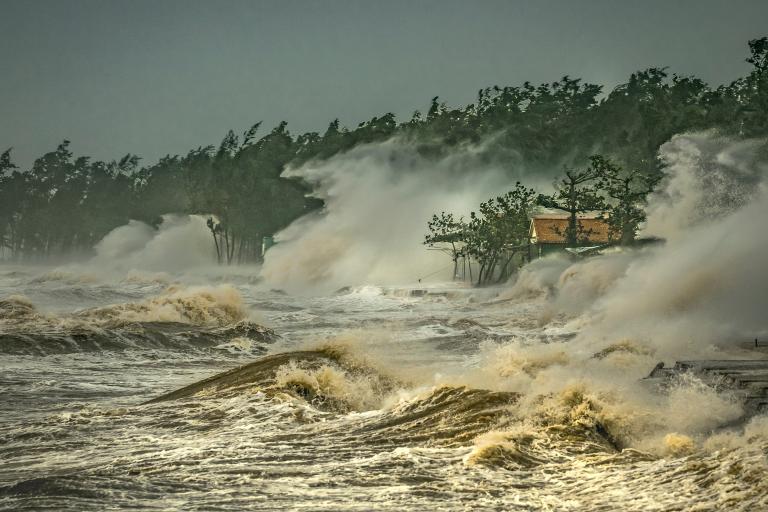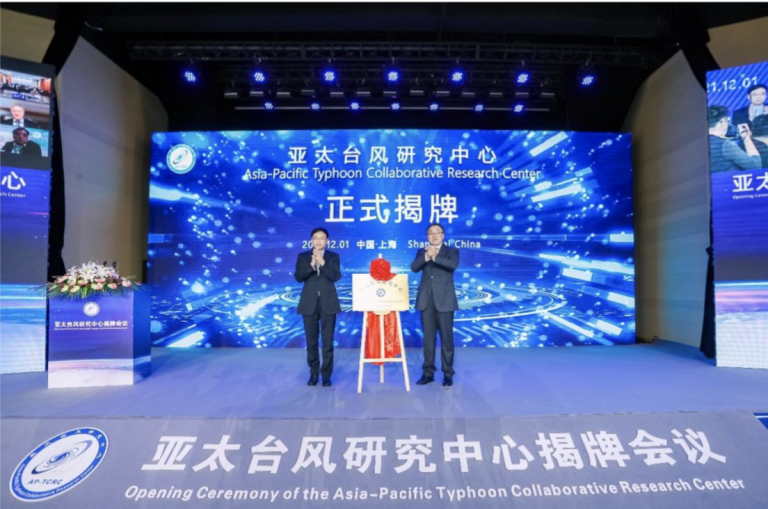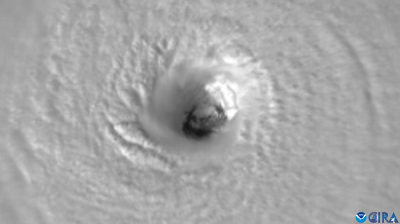Asia Pacific Typhoon Collaborative Research Centre launched
The Asia-Pacific Typhoon Collaborative Research Center (AP-TCRC) has been inaugurated in the Chinese coastal city of Shanghai, serving as a role model for regional coordination and cooperation in support of disaster risk reduction.

The Asia-Pacific Typhoon Collaborative Research Center (AP-TCRC) has been inaugurated in the Chinese coastal city of Shanghai, serving as a role model for regional coordination and cooperation in support of disaster risk reduction.
It will promote greater research and investigation into a major natural hazard, which every year causes massive loss of life and socio-economic upheaval.
“The tropical cyclone is one of the most important natural disasters in the world, and has been high on the agenda of WMO since the 1960s. With the Tropical Cyclone Programme, WMO has been providing essential support to Members for building resilience against tropical cyclone disasters, at the same time becoming a key partner to support United Nations humanitarian relief activities and operations,” said WMO Secretary-General Prof. Petteri Taalas.
“In the context of global climate change, WMO also invests more resources in research, including that on tropical cyclone monitoring, prediction and early warnings. The AP-TCRC will contribute to WMO agenda on tropical cyclones and benefit Members' disaster risk reduction efforts,” said Prof. Taalas in a congratulatory letter to the inaugural ceremony.
WMO Assistant Secretary-General Dr Wenjian Zhang made opening remarks on behalf of the WMO Secretary-General at the 1 Dec. inaugural ceremony. It was also attended by Zhiping Tang, Vice Mayor of Shanghai Municipal People’s Government of China; Yong YU, Deputy Administrator of China Meteorological Administration (CMA); Sanjay Srivastava of ESCAP; Naoyuki Hasegawa, Chairperson of the Typhoon Committee; and Jixin YU, Secretary of the Typhoon Committee.
Tropical cyclones account for one third of both deaths and economic losses from weather-, climate- and water- related disasters in last 50 years. On average, there are about 84 tropical cyclones globally every year, of which around one-third occur in the Western North Pacific region, said Dr. Zhang.
Climate change is increasing the impact of tropical cyclones, he said. The Intergovernmental Panel on Climate Change (IPCC) Sixth Assessment Report said it that it is very likely that the most intense phase of typhoons in the Western Pacific has shifted northwards. It is likely that the global proportion of major tropical cyclones has increased, with associated risks of stronger winds, heavier rainfall, higher waves and storm surges and coastal flooding.
“From this, we can see that there is a pressing need for strengthening regional and international cooperation in technical development of typhoon monitoring and forecasting and early warning, and prevention and mitigation of the extreme typhoon disasters,” said Dr. Zhang.

The AP-TCRC will initially prioritize areas with a focus on key techniques of typhoon numerical modelling and prediction, incorporating risks and impacts on societies, as well as tropical cyclone observation experiments with international and regional collaboration. It will promote the frontiers of sciences and technologies such as Artificial Intelligence, Big Data and Earth System modelling, and make these technologies available not only for the region but also for the globe, he said.
The AP-TCRC will be an official institution, established with the support of the Economic Commission for Asia and the Pacific/ WMO Typhoon Committee. It will become a centre of coordinated research and typhoon technology transfer mainly in Asia and the Pacific, and potentially over the globe.
It will be hosted by China through joint efforts by the Shanghai Municipal People’s Government and China Meteorological Administration. China, as one of the founding Members of the ESCAP/WMO Typhoon Committee, has played important roles in advocating and promoting regional and global collaborations.
Shanghai, a dynamic megacity which is exposed to tropical cyclone hazards, is ideally placed to host the new centre because it hosts the Shanghai Typhoon Institute, with the largest number of typhoon experts in China, said the Vice-Mayor of Shanghai Municipal People’s Government, Mr Zhiping Tang.
The new centre will help improve the objective prediction capability of typhoons, especially difficult typhoons. Shanghai will be the first to benefit from the achievements which will be shared with the Asia-Pacific region and even the world, he said.
To support improving the regional capacity of typhoon disaster prevention and mitigation, CMA will initiate joint research activities and projects on difficult issues about typhoon monitoring and prediction with scientific institutions around the world based the platform of the AP-TCRC.
For sustainable growth of the AP-TCRC in future, WMO and China agreed that the AP-TCRC should be mainstreamed as a new area of cooperation performance into the Letter of Intent between WMO and China on Promoting Regional Meteorological Cooperation in Support of the Belt and Road Initiative (BRI) to benefit WMO Members from the Asia-Pacific and other regions.
- WMO Member:
- China










